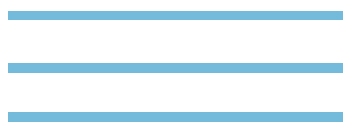The quickest way to reach your target online audience is to pay to get in front of them. However, this will not always be your best strategy, depending upon the profit margin of your product or service, and the competitiveness of your market. Here’s the math. Your ad will be presented to an online audience. Everyone who sees it will be counted as an impression. While it may be frustrating that not everyone who sees your ad will click on it, this can be helpful for brand awareness. They may need to see your ad multiple times before they click, and in some cases (as high as 50% according to both Google and Facebook), they may see your ad, choose not to click but rather to check out your website and social media pages to see if they want to do business with you. It’s important to have a professional looking online presence before launching an ad campaign.
Some percentage of the audience who sees your ad will click on it, and at that point you will be charged for the click by the online platform. You’ll naturally receive more spam clicks & calls as a result of running a campaign, because unfortunately some people will now notice that you have an ad budget and try to sell you their services. So while you may convert 80% of the people who are referred to you by clients and colleagues, you may only convert 10% of your clicks. The more competitive your space, the higher the price for each of those clicks, so the budget calculations needs to take into account the cost of acquiring a new customer through your paid campaign, compared to the lifetime value of the customer to your business. If it costs you $100 for a new customer but you only make $50 on whatever they buy from you, then we may want to look at another strategy. This is the math we’ll help you with before we get started to make sure that paid ads make sense for your business. However, the more niche you’re able to go on your campaign to fly under the radar of competitors with huge ad budgets, and the more targeted we can make your audience, the more likely it is that the math will work out in your favor.


Google Adwords
Google Adwords are popular because they work. Rather than targeting by the demographics of an audience the way you would on Facebook and Instagram, you target based on specific search terms. These terms may be set as narrowly or as broadly as makes sense for your campaign. For example, someone may enter “California chardonnay”, “chardonnay from California”, “buy California white wine” or “best California chardonnay”, and you’ll likely want your ad to appear for any of those variations. However, if you’re a tiny vineyard with a low budget and Robert Mondavi Winery has decided that they would also like their ads to appear for those search terms, then they will bid up the cost per click to outshine you. A niche strategy may be to go after search terms that do not have as many searches per month, still indicate purchase intent, and can win you some customers. The art of a successful Google Adwords campaign is in understanding your brand well enough to think of how it makes sense for you to be found, and the science is in performing the analysis to see if the return on investment makes sense. When we run Google Adwords campaigns, we perform this analysis up front and then manage the ads on an ongoing basis, making performance adjustments as needed.
Social Media Engagement
Social media engagement includes following other pages, liking and commenting on posts, joining groups, and asking others to connect. Social media is social, and the platforms tend to reward more active accounts by presenting more of their content. This works particularly well with Instagram. Their platform offers opportunities to post, like, follow, comment, add stories, post to IGTV and go live. The more of this you are able to do, the more your content will show up for others. Stories are particularly important and the new version of Instagram is stories-first. Many people only view stories on their feed, others only view posts and still others view a combination of available content. Whether you’re trying to become an influencer and lead your brand, or you’re a brand page, posting content alone simply won’t be enough to get you found. But engagement takes time, which is tough for most entrepreneurs to find, and that’s where we come in.



Social Media Ads
Social media ads can be a great place to start pay per click advertising for your small business. You can typically begin with a lower monthly budget than with Google Adwords. We can help you to start very small, by identifying which posts to boost and tracking those results, by running a display ad campaign or by remarketing. While we typically find that Facebook ads deliver the greatest return, Instagram can also be effective, as can pre-roll ads on YouTube. Other platforms usually require a heavy organic content strategy, although you may boost there as well. One important factor to consider is that social media ads are considered interruption advertising. Your audience visited the social media platform to see content, and your ad popped up. With Facebook, a business page really must have some level of paid ads as part of their strategy, even if it is only to boost content, since the algorithm has brought organic reach down close to zero. As a for profit company, Facebook really wants you to pay to play. As annoying as that may sound, there are still 2.7 billion users on Facebook so it is not to be ignored.